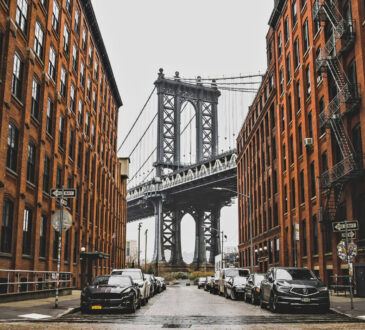Whether you’ve ever gone to a museum, a municipal building, a school, or a military structure, or even if you’ve driven through several neighborhoods, you’ve probably seen a tall, thin, gleaming pole with a flag that proudly displays its colors as it softly sways in the breeze. This is a typical sight in a variety of settings, including museums, municipal buildings, schools, and military installations.
Have you ever taken the time to examine those poles so closely? Each pole has been painstakingly built to handle the exact amount of load force that the flag and any wind that may be blowing on it may place on the pole. It is made up of a large number of sophisticated elements and assemblies, each of which serves a specific role, allowing a single flag to be easily raised into the air and lowered down as needed.
If you have never stopped to appreciate the aesthetic value and degree of care that goes into the building of a flagpole, you are unlikely to have a thorough grasp of all the phrases and components that belong to it. It has a number of distinct assemblies, which is why it works so well.
It’s probable that you’ll find yourself in the market for a flagpole for your home, office, or school one day. If you do this, you will most likely feel overwhelmed and perplexed by the diversity of flagpoles for sale. If you do this, you will most likely get overwhelmed by the number of flagpoles for sale.
We hope that at the conclusion of this essay, you will have a better grasp of the core components of a flagpole, making it easier for you to get all of the components and parts required for flagpole construction.
Flagpole
The term “flagpole” often refers to both the item that provides support and the components and assemblies of that object that are utilized to attach the flag. Every flagpole is unique and made of different materials, but every flagpole installation must have some form of the pole to which they may connect the various components necessary to hoist the flag. Depending on where the flag is flown, they are known by a number of different names. They include items like a mast, a flagstaff, a pole, and support. When flags are shown in the open air, they are hoisted on flagpoles.
Truck
Trucks are the caps that are attached to the top of the flagpole. Trucks are often referred to as truck caps. They have a number of holes at the top of the pole to which pulleys may be connected to allow the flag to be raised or lowered on the pole.
Finial
A flagpole is completed with a decorative piece known as a finial, which is located at the very top of the flagpole. In certain cases, it is also referred to as a staff ornament.
Halyard
The halyard refers to the cable or rope that is used on the pulleys to hoist and lower the flag on the pole.
As you can see, each component of the flagpole plays a crucial part in ensuring that the majestic flag may fly freely, but you may need a dictionary to comprehend what all of these terms mean. The vocabulary used to describe each component of a flagpole differs depending on whether it is positioned inside, outdoors, in a home, or on the ground. When buying a flagpole, it is usually good to have a list of components to better understand what it is that you are acquiring. We really hope that this basic introduction to flagpole components, as well as the terminology provided here, will be helpful to you in the process of acquiring a flagpole in the near future.
The Importance of Flying a Flag
Flags are an important national symbol. They may feature very detailed designs and are typically displayed prominently. Flags typically contain colors and designs that are symbolic of the country or organization they represent. The red and white stripes on the American flag, for example, represent the country’s first 13 colonies, while the blue field in the corner represents unity. The red circle in the center of the white rectangle that forms the Japanese flag represents the sun. Flags are commonly connected with the countries or organizations they represent. The French flag, for example, is commonly imagined when people think of France. Flags may also be flown to show support for a particular organization or team. Flags are commonly waved by spectators at sporting events, and flags are sometimes carried by protestors as they march. Flags, whatever their purpose, are important in many different cultures across the globe.
The Colors of the American Flag’s Background
The American flag is a powerful symbol of liberty and democracy. According to popular opinion, the three major colors of the American flag—red, white, and blue—represent the breadth of the country, its principles, and the blood lost by its military. The design of the national flag, on the other hand, was inspired by a simpler source: George Washington’s family crest. The colors red, white, and blue were chosen for the crest because they are considered “heraldic colors.” As a result, they are often used as emblems of aristocracy and nobility. Its relationship with Washington’s wealth as a landowner may seem to contradict the flag’s patriotic purpose. Nonetheless, it is crucial to recall that throughout the early years of the United States, there was significant respect for tradition and authority. As a result, the use of heraldic colors on the flag was most likely meant to show the nation’s appreciation for its founding father. Of course, today’s flag symbolism is significantly more subtle. For many Americans, it represents a common past and a feeling of national identity. It is a reminder of the sacrifices made by Americans throughout the years in the name of justice and liberty.
How to Remove an Old Flag Correctly
When a flag can no longer be flown, it should be properly disposed of. The best course of action is to burn the flag. This may be done privately or as part of a formal ceremony. If you decide to burn the flag personally, do it carefully and safely. Ascertain that there is no danger of the fire spreading and that it is big enough to completely consume the flag. When the flag has been reduced to ashes, you are allowed to dispose of its remnants in any way you see properly. Some individuals opt to spread the ashes in a chosen place, while others choose to bury the remains. Giving an old flag a polite send-off is a way to appreciate all it represents, regardless of how the ashes are disposed of.
To learn more about displaying a flag on your own property to demonstrate your patriotism, head over to our website!




